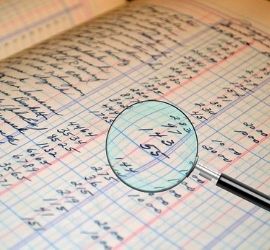What Are Nonparametric Statistics, Tests, and Data?
 Nonparametric statistics, tests, and methods make statistical inferences without regard to prescribed models or any underlying distribution.
Nonparametric statistics, tests, and methods make statistical inferences without regard to prescribed models or any underlying distribution.
Nonparametric statistics are statistical methods in which data do not come from specified models determined by a small number of parameters. For example, the normal distribution model and the linear regression model. Nonparametric statistics may use ordinal data. This means it does not necessarily rely on numbers but rather on a ranking or hierarchy of order. An example of ordinal data would be a poll that revealed consumer preferences for use ranging from always to never.
Nonparametric statistics encompass descriptive statistics, statistical models, inference, and statistical tests. The structure of nonparametric models is determined by data rather than being established through direct observation. However, the word nonparametric does not indicate that such models are wholly devoid of parameters. Rather, that the quantity and nature of the parameters are adjustable and not predetermined. For example, a nonparametric estimate of a probability distribution is a histogram. Nonparametric statistics make no assumptions regarding sample size or the nature of the observed data.
Nonparametric Statistics vs Parametric Statistics
It is an impossibility to collect data from all individuals of interest in a population study. As a result, the sole option is to collect data from a subset or sample of the persons of interest. However, the ultimate goal is to understand the truth about the population. Means, standard deviations, and proportions are all crucial values that are referred to as parameters when discussing a population. Since we can’t gather data from the entire population, we don’t know what the parameters are for that population. However, we can compute estimates of these quantities for our sample. These numbers are known as statistics when they are calculated using sample data. Conversely, a statistic is a method of estimating a parameter.
- Parametric statistics contain parameters such as the mean, standard deviation, Pearson correlation, variance, and so on. The observed data is used to estimate the distribution’s parameters in this type of statistics. Data are frequently assumed to come from a normal distribution with unknown parameters. These are then approximated using the sample mean and sample variance in parametric statistics. Parametric statistical procedures rely on assumptions about the shape of the distribution in the underlying population. Also, they rely on assumptions about the form or parameters of the assumed distribution.
- Nonparametric statistics do not presume that data follows a normal distribution. This type of statistical measurement estimates the shape of the distribution. There are numerous cases in which a normal distribution can be assumed. However, there are also certain situations in which the underlying data generation process is far from normal. Nonparametric statistics make no or few assumptions on the form or characteristics of the population distribution from which the sample was collected.
Example of Nonparametric Statistics
Consider a financial analyst who wishes to estimate the value-at-risk (VaR) of an investment. The analyst gathers earnings data from hundreds of similar investments over a similar time horizon. Rather than assume that the earnings follow a normal distribution, the analyst chooses to estimate the distribution nonparametrically. Thus, rather than use a method that assumes a normal distribution, as is done in classical regression analysis, the researcher decides to use a nonparametric method such as quantile regression analysis.
What is a Nonparametric Test?
A nonparametric test is also known as a distribution-free test. It makes no assumptions about the underlying distribution. For example, that the data displays a normal bell curve distribution. In contrast, a parametric test makes assumptions about the parameters. For example, the mean or standard deviation. When the term nonparametric is used in statistics, it does not necessarily imply that there is no knowledge of the population. Instead, it usually indicates that the population data does not have a normal distribution. Whenever possible, analysts should use parametric tests because they are more accurate. Also, because parametric tests have more statistical power, they are more likely to uncover a truly significant effect.
Nonparametric testing should only be used when absolutely necessary. For example, when one knows that assumptions like normality are being violated. However, with a large enough sample size, nonparametric tests can perform well with non-normal continuous data. Still, when the data isn’t normal, nonparametric tests are utilized. As a result, the first objective is to determine whether the data is normally distributed. If so, one can utilize more powerful parametric statistical tests if the data is roughly normal.
Nonparametric Data
Data that does not fit a known or well-understood distribution is referred to as nonparametric data. Data could be nonparametric for many reasons, such as:
- Not real-valued – Data instead is ordinal, intervals, or some other form.
- Data is oddly shaped – Data is real-valued but does not fit a well-understood shape.
- Contains outlying features – Data is almost parametric but contains outliers, multiple peaks, a shift, or some other feature.
There are many statistical methods that can be used with nonparametric data. In reality, most parametric procedures have a nonparametric counterpart. However, nonparametric findings are generally less powerful than their parametric counterparts. This is due to the fact that they must be diluted or adapted to work for all sorts of data. We can still use them for inference and make claims about discoveries and conclusions. However, they won’t have the same weight as statements made with parametric approaches because the distribution information is discarded.
Final Words
Nonparametric statistics are called distribution-free statistics. This is because they are not constrained by assumptions about the distribution of the population. Consequently, they can easily accommodate data that have a wide range of variance. Unlike parametric statistics, these distribution-free tests can be used with both quantitative and qualitative data.
Because of their ease of use, nonparametric statistics have gained popularity. As the need for parameters decreases, the data becomes more suitable for a wider range of tests. Nonparametric approaches are appropriate when the mean, sample size, standard deviation, or estimation of any other related parameters are not available. . As a result, they have a broader application than parametric statistics. This is because it makes fewer assumptions about the sample data. However, nonparametric approaches will be less efficient in circumstances where parametric testing is suitable. This is because, unlike parametric statistics, nonparametric statistics reject some information from the data.
Up Next: What Is Garden Leave in an Employment Contract?
 Garden leave is an employment practice where an employee who gives notice is paid during the notice period, but required to stay away from the workplace.
Garden leave is an employment practice where an employee who gives notice is paid during the notice period, but required to stay away from the workplace.
Garden leave is a period of time during which an employee remains away from work or works remotely while serving out a notice period. The employee remains on the payroll and continues the process of severing their employment. However, the employee is not permitted to return to work or begin any other employment while serving the garden leave phase. The term garden leave may sound appealing. And, many employees may choose to spend their notice time resting at home rather than at work. However, the limiting nature and negative ramifications make it less than desirable.
Garden leave is known as gardening leave in the United Kingdom, Australia, and New Zealand. The term is typically used in the finance industry. In the USA, Massachusetts became the first state to enact a garden leave clause in state employment statutes.




